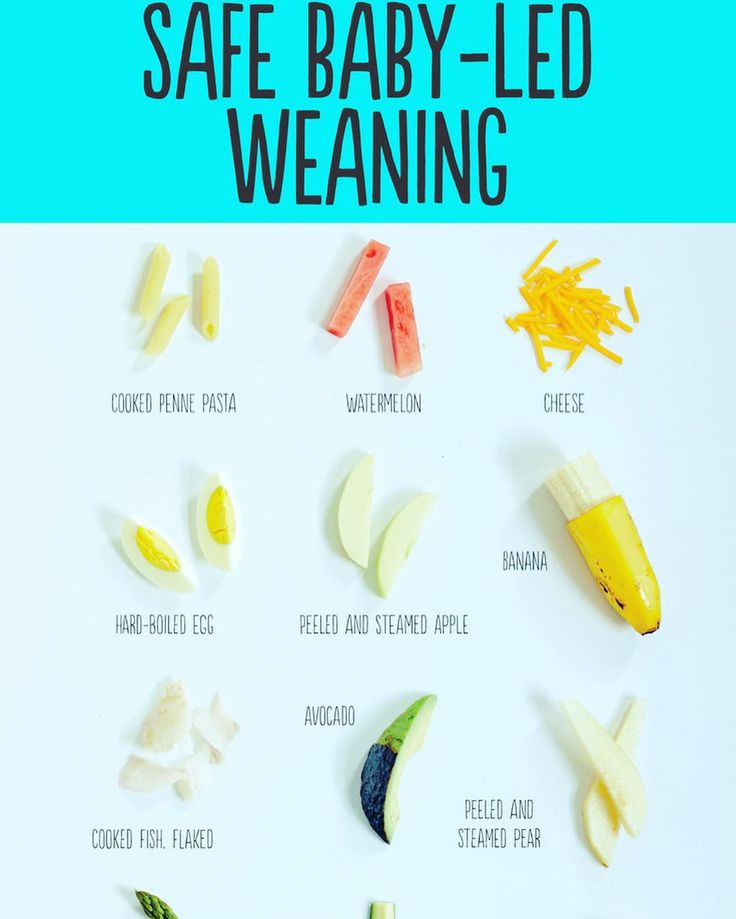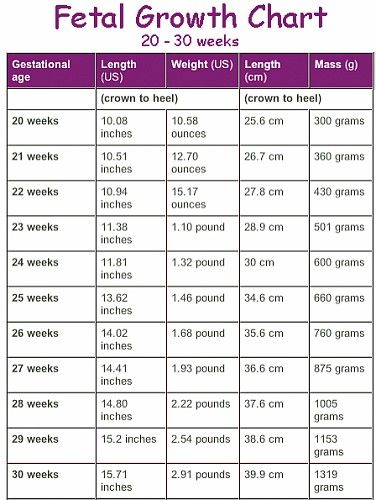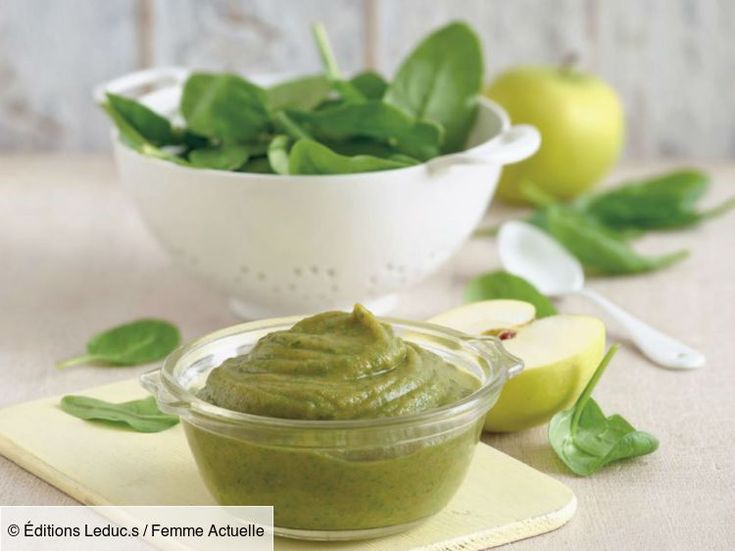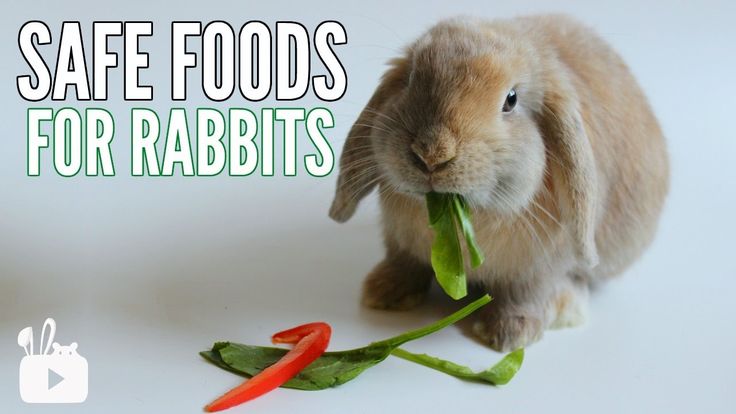How to prepare squash for baby food
Butternut Squash Baby Food (Stage One)
This homemade Roasted Butternut Squash Baby Food Puree recipe not only contains calcium, folate, fiber, and vitamins A and C, but it is also a deliciously smooth way to introduce butternut squash to your baby! It’s a great Stage 1 baby food for 4-6 months and up!
Medically reviewed Jamie Johnson, Registered Dietitian Nutritionist (RDN), and Lauren Braaten, Pediatric Occupational Therapist (OT).
Butternut Squash Baby FoodThis butternut squash puree is a quick and simple recipe that involves roughly 5 minutes of hands-on time! 🖐
We’ll let the oven do all the hard work for the rest of the prep time. Cuz why should we work harder 💪 when we can work smarter? 🙋♀️
Butternut squash contains calcium, folate, fiber, and vitamins A and C and is considered one of the very best first foods for your baby.
Is it your first time making homemade baby food? Then I suggest you start this journey by reading my in-depth Guide on How to Make Homemade Baby Food. The detailed guide goes over all the important information such as the best cooking tools to have on hand, safe storage, how to know when baby is ready for solids, how to introduce purees, the best first foods for baby, and more! You can also check out my best-selling cookbook for even more information and recipes!
Butternut Squash Video
Watch this video to see just how easy it is to make this delicious puree for your baby!
Reasons to Love this Butternut Squash Puree- creamy and smooth
- great for 4-6+ months
- stage one baby food
- healthy — full of essential nutrients for your baby
- easy to make — requires only 5 minutes of hands-on time
- babies will love the sweet and earthy taste
- homemade
- freezer-friendly
- budget-friendly
Health Benefits of Butternut Squash
- High levels of antioxidants and vitamins A and C, which boosts the immune system and reduces inflammation
- A good source of potassium that helps keep bones healthy
- Contains a protein that may be a potent anticancer agent
- Provides calcium to help strengthen bones and folate to help with brain development
Make sure to read the recipe card below for full ingredients and instructions!
- Butternut Squash: This is an easy-to-find, inexpensive, and nutritious food for your baby! When selecting butternut squash, look for a firm squash that has a solid beige color skin without bruising or damage marks.
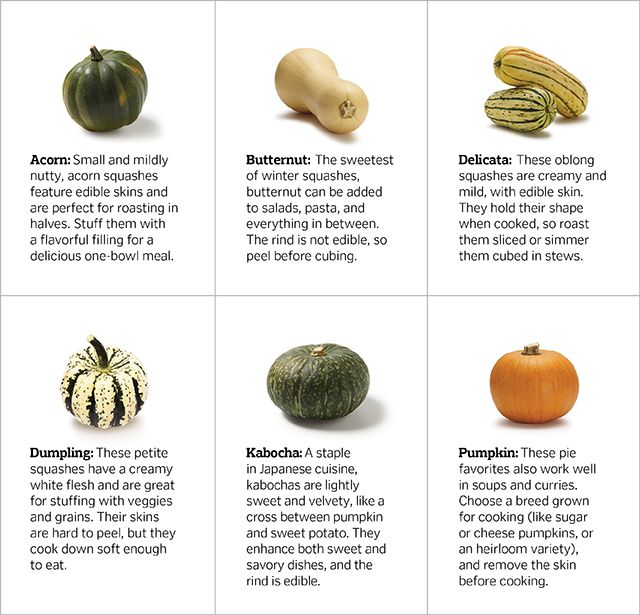 The insides will range from bright yellow to burnt orange, so don’t be alarmed if yours is somewhere in that color range.
The insides will range from bright yellow to burnt orange, so don’t be alarmed if yours is somewhere in that color range. - Thyme or Rosemary: We are kicking up the flavor profile with a fun and fresh herb — thyme or rosemary. Either of these herbs will tone down the earthiness of the squash and ramp up its freshness and citrus aspect. You can’t go wrong with either. But you can always skip adding herbs and spices to your baby food if you prefer (see more below).
Adding Healthy Fats Tip: If you are looking to add some extra healthy fat to your baby’s meals, then you can drizzle the butternut squash with extra virgin olive oil before roasting. Olive oil is a healthy fat that is full of omega 3 and omega 6 that helps baby absorb vitamin D which is important for bone growth and strengthening.
Tools NeededThese tools will make it a lot easier for you to make this healthy Sweet Potato puree. For more of my favorite kitchen tools make sure to check out my online shop.
- Baking Sheet
- Blender or Food Processor
- Knives
- Freezer Tray
- Storage Containers for Fridge
- Stasher Bag
- Bib with catch pocket
- Reusable pouches
- Heat Oven: Preheat the oven and line a baking sheet.
- Prep Squash: Cut the butternut squash in half and scoop out the seeds. Place them on the baking sheet with the flesh side down, and brush with olive oil (optional).
- Bake: Place the baking sheet in the oven and bake until easily pricked with a fork.
- Scrape: Let it cool, and then scrape off the skin until you only have the butternut squash left. Add to the blender or food processor.
- Add Herbs: Add in a pinch of thyme or rosemary to the butternut squash.
- Puree: Turn on the blender and puree until smooth, adding liquids if needed.

- Serve or freeze for another meal.
While I love the earthly, caramel flavor of roasted butternut squash, there are several ways you can cook butternut squash for baby food.
SteamingPeel and roughly chop 1 butternut squash. Place the cubes into a steamer basket over 2 inches of boiling water for 10-15 minutes or until tender when pricked with a fork. Puree in a blender as directed below.
BoilingPlace 1 peeled and roughly chopped butternut squash into a medium saucepan, add enough water to cover the butternut squash, and bring to a boil. Reduce to simmer and cook for 7-10 minutes or until tender when pricked with a fork. Puree in a blender as directed below. Note that boiling the butternut squash decreases the nutritional value of the puree since a lot of the nutrients are thrown out with the water after cooking.
Saving Time Tip: Steaming or boiling butternut squash are great methods to use if you are using prepared or frozen butternut squash. I have found both peeled and cubed fresh or frozen butternut squash in my grocery store, which are both viable options if you are short on time.
I have found both peeled and cubed fresh or frozen butternut squash in my grocery store, which are both viable options if you are short on time.
Frequently Asked Questions
Can butternut squash be baby’s first food
Butternut squash can 100% be your baby’s first food if you want it to be. It is recommended to wait to introduce the top eight allergen foods to your baby once a few other well-tolerated foods have been introduced, but otherwise, foods can be introduced in any order so choose whatever you are most excited for your baby to have.
Is butternut squash a common allergen for baby?
No, butternut squash is not a common allergen, however, as with any food, start with a small portion and be aware of any signs that might be an allergic reaction after introducing it.
When can baby eat butternut squash?
Babies can have butternut squash as one of their first foods. When a baby can start on solids is determined by their own rate of development, which generally comes between 4-6 months of age. Some of the developmental milestones babies need to reach in order to start solids include: if your baby has solid control of their head and neck, if your baby has doubled in weight, and if your baby is reaching for or opening their mouth when you eat (see my guide here). Before you start your baby on purees, you should consult with your pediatrician to make sure your child is developmentally ready.
When a baby can start on solids is determined by their own rate of development, which generally comes between 4-6 months of age. Some of the developmental milestones babies need to reach in order to start solids include: if your baby has solid control of their head and neck, if your baby has doubled in weight, and if your baby is reaching for or opening their mouth when you eat (see my guide here). Before you start your baby on purees, you should consult with your pediatrician to make sure your child is developmentally ready.
Can you add spices or herbs to this baby puree?
Yes! You can add in a pinch of chopped rosemary to this recipe, but feel free to use the following spices instead: basil, cilantro, ginger, nutmeg, coriander, mint, cinnamon, or mild curry powder (see quantity recommendations in the recipe card).
Tip on Spices: I always add spices or herbs to my baby food purees, but you can choose to leave them out in all of your baby food. You do you! Either way, this puree will surely taste amazing.
You do you! Either way, this puree will surely taste amazing.
Does butternut squash cause constipation for babies?
Butternut squash, though unlikely, may cause constipation in some babies, so avoid giving too much.
How to Store Butternut Squash Baby FoodRefrigeratorYou can store this puree in an airtight container in the fridge for up to 4 days.
FreezerThis puree can be frozen for up to 4 months.
- Spoon puree into a freezer storage container– do not overfill.
- Place the lid on the storage container or cover with a piece of saran wrap, and label with the date and recipe name.
- Place the tray into the freezer and let it freeze completely — preferably overnight.
- Pop-out the baby food cubes and place them in a ziplock baggie or stasher bag. Don’t forget to relabel the baggie or stager bag for future reference.

Need more information on how to store your baby foods? Head over to my Best Baby Food Storage Containers – Plus 6 Tips on Freezing and Thawing post!
Label Tip: Don’t forget to label your purees before you place them in the fridge or freezer with the name of the puree and the date you made it. Take it from me; by the end of the week, you will completely forget what is in your freezer and how long it’s been there. 😉
Puree Feeding Tips
- Follow your baby’s lead – when feeding purees from a spoon, sometimes there’s a tendency to keep offering bites past the point of your baby being full. Always follow baby’s cues for when they are done eating. Turning away from the spoon, closing her mouth, or pushing food away are all signs that baby is finished with the meal.
- Trial adding a little seasoning or spice to purees – babies like flavor! Or consider changing the temperature of purees from time to time, to slightly warmed or slightly chilled.
 Varying these aspects adds to the sensory experience!
Varying these aspects adds to the sensory experience! - Place a small amount of puree on the tray during spoon feeding, so that your baby can dip their fingers or hands in the puree. Allowing baby to explore foods in this way helps them learn to self-feed and can help them be more willing to try new textures and foods in the future.
While this butternut squash puree is tasty by itself, it’s also super easy to mix and match with other nutrient-dense baby food purees. So give these fun flavor combos a try!
- Apples
- Carrots
- Pears
- Cherries
- Quinoa Baby Cereal
- Chicken
- Corn
- Sweet Potato
- Soft Tofu
- Pumpkin
- Mango
- Cauliflower
- Yogurt
I’D LOVE TO KNOW HOW IT TURNED OUT! LEAVE A COMMENT AND A ⭐️ RATING BELOW 👇
Or watch a shortened version of the video here.
- 1 butternut squash
- 1 tsp fresh thyme or rosemary, roughly chopped
- 1-2 tsp olive oil (optional)
- 1/2-1 cup liquid (water, fresh breast milk, formula, stock or bone broth)
Preheat: Heat oven to 450 degrees F. Line baking sheet with a silicone mat, tin foil or parchment paper.
Prep: Cut butternut squash in half, deseed and place flesh side up, skin side down on the baking sheet. Optional – feel free to drizzle the squash with 2 teaspoons of olive oil for some added healthy fat.
Roast: Place the baking sheet into the oven and bake for 45-60 minutes or until you can easily prick the squash with a fork.

Peel: Let cool until you can handle the squash with your hands. Scrape the flesh off of the skin and place in a blender or food processor.
Add Herbs: Add the thyme or rosemary to the blender.
Puree: Turn on the blender or food processor and puree, adding liquid in 1/4 cup increments until you have the desired consistency. I had to add in 3/4 cup of water to my puree shown below.
Eat: Serve or freeze for later.
Age: 4-6 months and up
Yield: 25 ounces
Additional Spices: Feel free to sub the thyme or rosemary for 4 chopped basil leaves, 1 tsp chopped cilantro, 1/2 tsp minced fresh ginger, 1/2 teaspoon nutmeg, 1/2 tsp coriander, 1/2 tsp cinnamon or even 1/2 tsp of mind curry powder.
Freezer Tray
Blender
Silicone Baby Bibs
Bumkins Baby Bowl
Tripp Trapp High Chair
GreenPan Cookware
Did you make this recipe?
Tag @babyfoode on Instagram and hashtag it #babyfoode!
Pin Recipe Email a Friend
Butternut Squash Baby Food Puree (With Make-Ahead Tips)
Making Butternut Squash Baby food puree for a baby or toddler is one of our favorite baby food purees. I’ll share the basic, easy method, plus 5 simple ways to add more flavor.
Butternut Squash Baby Food
Transforming a whole or precut butternut squash puree into smooth, silky baby food is so easy. You only need two basic ingredients and the whole thing can be made ahead and stored in the fridge or freezer in smaller portions.
This is one of my favorite make-ahead baby food purees to share with the little ones!
Butternut squash puree is a great early food for babies that I like to continue serving to my toddlers since it’s packed with nutrition and it has a mild flavor that kids tend to enjoy. Plus, it’s perfect to serve on its own or to stir into other foods or recipes such as oatmeal, overnight oats, smoothies or muffins.
Plus, it’s perfect to serve on its own or to stir into other foods or recipes such as oatmeal, overnight oats, smoothies or muffins.
TIP: You can start with a whole butternut squash or precut cubes from the produce section of your store.
Ingredients You Need
To make this recipe, you just need a butternut squash (or a bag of precut cubes from the store), olive oil, and water. So simple!
Step-by-Step Instructions
Here’s a look at the simple process involved in making this recipe. Scroll down to the bottom of the post for the full information.
- Prepare the squash.
- Toss the cubes with olive oil and bake it in the oven.
- Place squash into a blender.
- Blend until smooth, adding water as needed to help the mixture swirl nicely.
TIP: I like to roast my butternut squash before making a puree so that there’s some healthy fats in the mix from the olive oil.
What else can I make with Butternut Squash Puree?
You can serve it as is, or you can use it in:
- Butternut Squash Muffins
- Baby Oatmeal with Butternut Squash
- Stir it into plain yogurt
- Spread it on toast
- Spread a layer in Veggie Grilled Cheese
- Add to a smoothie
- Stir it into Marinara Sauce
- Use it in quesadillas
Flavors to Add to Butternut Squash Puree
The basic puree has a nice flavor, but you can also add these flavors to add more interest.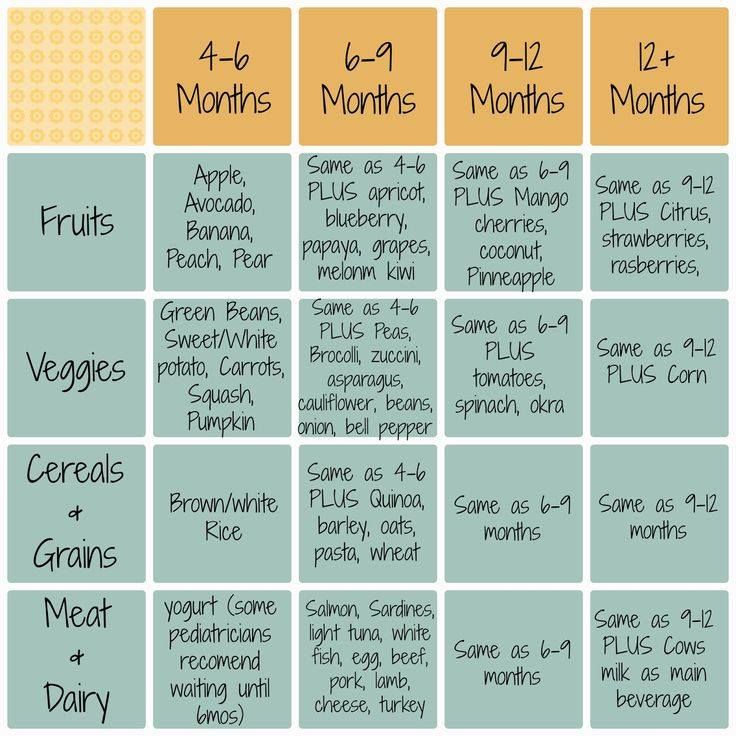
- Cinnamon
- Ground ginger
- Chinese Five Spice
- Cumin
- Pumpkin Pie Spice
TIP: You could also sweeten a little with apple butter or applesauce.
Roasted Butternut Squash for Baby-Led Weaning
To serve butternut squash in the baby-led weaning style, try roasting it in thick sticks or larger pieces and offering one at a time to baby to self-feed.
How to Store
To store in the fridge, simply place squash into small food storage containers for 3-5 days. Stir and warm briefly before serving if desired.
To store in the freezer, I like to portion out into an ice cube tray, freeze, and then once frozen, transfer the cubes into a zip top freezer bag to freeze for up to 3 months. You can then take one or two out at a time and let thaw in the fridge or at room temp before offering to a baby or toddler.
Best Tips for Success
- Roast the squash until soft when poked with a fork so it’s easy to blend.

- Add water slowly to reach the desired smooth consistency.
- Stop and scrape down the sides of the blender as needed.
- Stir in ½ teaspoon cinnamon, ¼ teaspoon ground ginger, ⅛ teaspoon Chinese Five Spice, ½ teaspoon cumin, or ½ teaspoon Pumpkin Pie Spice if desired to add more flavor.
- Stir in apple butter or Apple Puree to make a slightly sweeter apple-butternut squash puree. (This is a nice topping for pancakes and waffles!)
- You can serve it as is, or you can use it in Butternut Squash Muffins, in Baby Oatmeal with Butternut Squash, stir it into plain yogurt, spread it on toast, stir it into Marinara Sauce, or use it in quesadillas.
Related Recipes
I’d love to hear what your family thinks of this recipe if you try it, so please comment below to share!
Prep Time 10 minutes
Cook Time 18 minutes
Total Time 28 minutes
Author Amy Palanjian
Cuisine American
Course Baby Food
Calories 58kcal
Servings 8 (Makes about 2 cups puree)
- ▢ 1 medium butternut squash
- ▢ 1 tablespoon olive oil
Preheat oven to 375 degrees F.
 Remove the peel of the squash with a vegetable peeler or with a knife.
Remove the peel of the squash with a vegetable peeler or with a knife.Cut the “neck”, or the skinnier part of the squash into 1/2-inch rounds and dice.
Place on a greased foil-lined baking sheet in one even layer and bake for 18-22 minutes or until soft when poked a fork.
Add to a blender and puree, adding 1/4-½ cup water as needed to make a smooth puree.
Serve or store in an airtight container/s in the fridge for 3-5 days. Or portion into an ice cube tray and freeze, then transfer frozen cubes to a zip top storage bag and freeze for up to 3 months.
Storage Containers
Reusable Pouch
- Roast the squash until soft when poked with a fork.
- Add water slowly to reach the desired smooth consistency.
- Stop and scrape down the sides of the blender as needed.
- Stir in ½ teaspoon cinnamon, ¼ teaspoon ground ginger, ⅛ teaspoon Chinese Five Spice, ½ teaspoon cumin, or ½ teaspoon Pumpkin Pie Spice if desired to add more flavor.

- Stir in apple butter or applesauce to make a slightly sweeter apple-butternut squash puree. (This is a nice topping for pancakes and waffles!)
- You can serve it as is, or you can use it in Butternut Squash Muffins, in Baby Oatmeal with Butternut Squash, you can stir it into plain yogurt, spread it on toast, stir it into Marinara Sauce, or use it in quesadillas.
Serving: 0.25cup, Calories: 58kcal, Carbohydrates: 11g, Protein: 1g, Fat: 2g, Saturated Fat: 1g, Polyunsaturated Fat: 1g, Monounsaturated Fat: 1g, Sodium: 4mg, Potassium: 330mg, Fiber: 2g, Sugar: 2g, Vitamin A: 9966IU, Vitamin C: 20mg, Calcium: 45mg, Iron: 1mg
Tried this recipe?Rate in the comments and tag @yummytoddlerfood on IG!
This post was first published October 2019.
8 pumpkin dishes that children will love
Pumpkin is a valuable product, especially in a child's diet. It contains B vitamins, beta-carotene, potassium, magnesium, phosphorus and fiber. At the same time, you can cook a lot of both sweet and savory dishes from pumpkin - some of them will surely appeal to children.
At the same time, you can cook a lot of both sweet and savory dishes from pumpkin - some of them will surely appeal to children.
Pumpkin porridge with rice
• Peel the pumpkin, cut into large cubes and simmer over low heat, adding a little water to avoid burning.
• When the pumpkin softens slightly, add a little more water and pour rice directly into the same pan.
• Mix thoroughly, add salt, sugar, cinnamon and a little citric acid to taste.
• If you want the porridge to be more "pumpkiny", add less rice and more pumpkin.
• You can add millet instead of rice, it will also turn out delicious. Serve with butter.
Pumpkin puree soup
Pumpkin puree soup, despite its simplicity, is popular in many restaurants. There are many recipes, we offer a basic one that you can adapt to the tastes of your family.
• So, fry 300-400 g of pumpkin pulp with onions and small carrots in butter.
• Puree in a blender, add hot milk or cream.
• Pour into a saucepan, bring to a boil, add spices, salt and serve, sprinkling cream soup with croutons or pumpkin seeds.
• If you add pre-fried chicken fillet pieces to the soup, it will turn out to be more satisfying, and with MAGGI® Super Seasoning "10 Vegetables" - more fragrant.
Baked pumpkin
This is perhaps the easiest recipe that even a child can handle.
• Spread the pumpkin pulp cut into large squares on a baking sheet covered with foil, bake in the oven until the pumpkin becomes soft.
• Then sprinkle with cinnamon and drizzle with runny flower honey. Healthy dessert is ready.
By the way, the taste of pumpkin goes well with blue cheeses. If, instead of honey, pumpkin is sprinkled with dorblu cheese, you get a savory, but no less tasty dish - however, rather for an adult menu.
Pumpkin fritters
If you like pancakes made from zucchini or potatoes, then why not add pumpkin to them?
• Coarsely grate the zucchini first, then the pumpkin, salt and mix, and then gently squeeze out the excess juice.
• Depending on the amount of the resulting mass, add 1 or 2 chicken eggs, a little flour, mix and fry in a pan, like regular pancakes.
• Serve with sour cream.
Pumpkin chips
• Cut the peeled pumpkin into thin slices, brush with olive oil, salt, sprinkle with sesame seeds and spread on a baking sheet covered with baking paper.
• Bake at 200 degrees for about 15 minutes.
• Be careful not to burn the pumpkin as the baking time may vary depending on the type of pumpkin and the thickness of the slices.
• Get an unusual snack, which can replace store-bought potato chips, cookies and other foods that are not the most healthy for a child.
Fresh pumpkin salad
• Coarsely grate pumpkin, sweet golden apples and carrots.
• Drizzle with olive oil, sprinkle with peeled pumpkin seeds. Healthy vitamin salad is ready.
Pumpkin Cheesecake
For the cheesecake base, you will need 250 g almond biscuits, 120 g butter and 1 tbsp. brown sugar.
brown sugar.
For the filling: 250 g pumpkin, 200 g sugar, 500 g Philadelphia cheese, 2 eggs, 2 egg yolks, 200 ml heavy cream, cinnamon, ginger, salt and 3 tbsp. lemon juice.
• Grind cookies in a blender, add melted butter and sugar to it: you should get a soft plastic mass.
• Roll it out and lay it on the bottom of the baking dish, leaving low sides.
• Put in the refrigerator and take care of the filling. At medium speed, mix eggs, yolks, Philadelphia cheese and sugar with a mixer or blender, add pre-prepared pumpkin puree, lemon juice, spices and salt to taste.
• At the end, add the cream and mix again until smooth.
• Pour the finished filling into the mold and send it to the oven preheated to 190 degrees for 50-60 minutes.
• When the cheesecake is done, let it cool straight out of the pan.
• Serve drizzled with hot chocolate or sprinkled with salted caramel.
Candied pumpkin
• Cut the pumpkin into small pieces, put in a layer in a large saucepan and generously sprinkle with sugar, top with sliced lemon.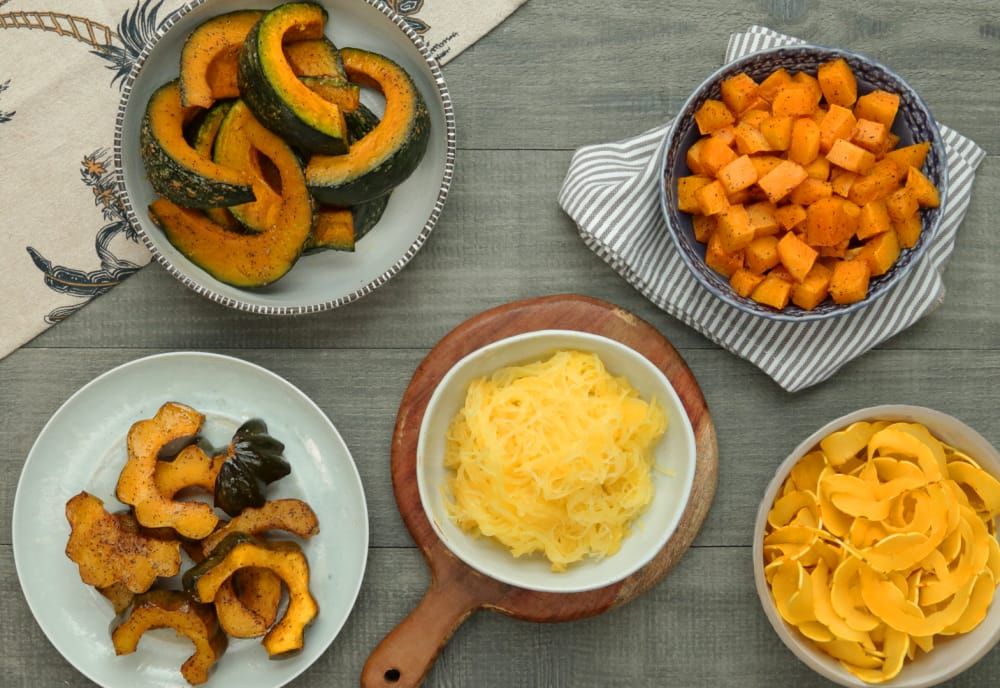
• Then again a layer of pumpkin-sugar-lemon and again, until the place in the pan runs out.
• Place the pot over medium heat, bring to a boil, cook for 5 minutes and let cool for 3-4 hours.
• Repeat the procedure one or two more times. The main thing is that the pumpkin is soaked in syrup, but at the same time the pieces retain their shape and do not turn into mashed potatoes.
• When the pumpkin has cooled for the last time, drain the syrup and send the candied fruits to dry in the oven. This will take about 4 hours at a temperature of 100 degrees.
• When the candied fruits have hardened, sprinkle with powdered sugar and serve.
• Store candied fruit in a closed jar.
Olga Vykhodchenko
Journalist
Baby pumpkin puree recipe
Recipe information
Servings: 4 | Difficulty Easy
Total time 40 min.
Preparation 10 min. | Cooking 30 min.
Kitchen Slavic | Author Kristina
Placed on
Category Pumpkin Dishes | Other blanks
Energy value per 100 g
Calories 21 kcal
Proteins 1 g | Fats 0. 2 g | Carbohydrates 5.9 g
2 g | Carbohydrates 5.9 g
Preparation
Peel the pumpkin and cut into even 2x2cm pieces.
Place the cut pumpkin in a saucepan.
Pour very hot water or boiling water over the vegetable pieces. Cooking under a closed lid.
How long to boil pumpkin for baby puree? Pumpkin cooking time can vary from 15 minutes to half an hour. Steamed pumpkin takes longer, about 20-25 minutes. Cooking time for pumpkin depends on the density of the vegetable. Readiness can be checked with a knife or fork by piercing the vegetable.
Put the finished pumpkin into a blender.
Grind until smooth. Use pumpkin puree at your discretion, you can eat it yourself, you can feed your baby
Orange puree can be stored in the refrigerator for several days. Pour into sealed silicone molds. Puree can be frozen; when defrosted, it will retain all its taste, bright color and useful properties. Alternatively, you can freeze prepared pumpkin slices. To do this, wash the vegetable, peel the pumpkin and remove internal seeds and fibers. Cut into pieces for the future dish and put in portions in a bag for freezing vegetables. Load the package into the freezer and take it out before direct cooking. In this case, it is not necessary to defrost the pumpkin, dip the frozen pieces into boiling water, slightly increase the cooking time.
Pour into sealed silicone molds. Puree can be frozen; when defrosted, it will retain all its taste, bright color and useful properties. Alternatively, you can freeze prepared pumpkin slices. To do this, wash the vegetable, peel the pumpkin and remove internal seeds and fibers. Cut into pieces for the future dish and put in portions in a bag for freezing vegetables. Load the package into the freezer and take it out before direct cooking. In this case, it is not necessary to defrost the pumpkin, dip the frozen pieces into boiling water, slightly increase the cooking time.
Note to moms
- Beta-carotene in pumpkin puree for a child is better absorbed if a few drops of vegetable oil are added to the puree.
- Pumpkin puree can be combined with other complementary foods: rice or millet porridge, mixed with meat pate. A child can consume such food from 8-9 months.
- Pumpkin goes well with early foods: Brussels sprouts and apples.
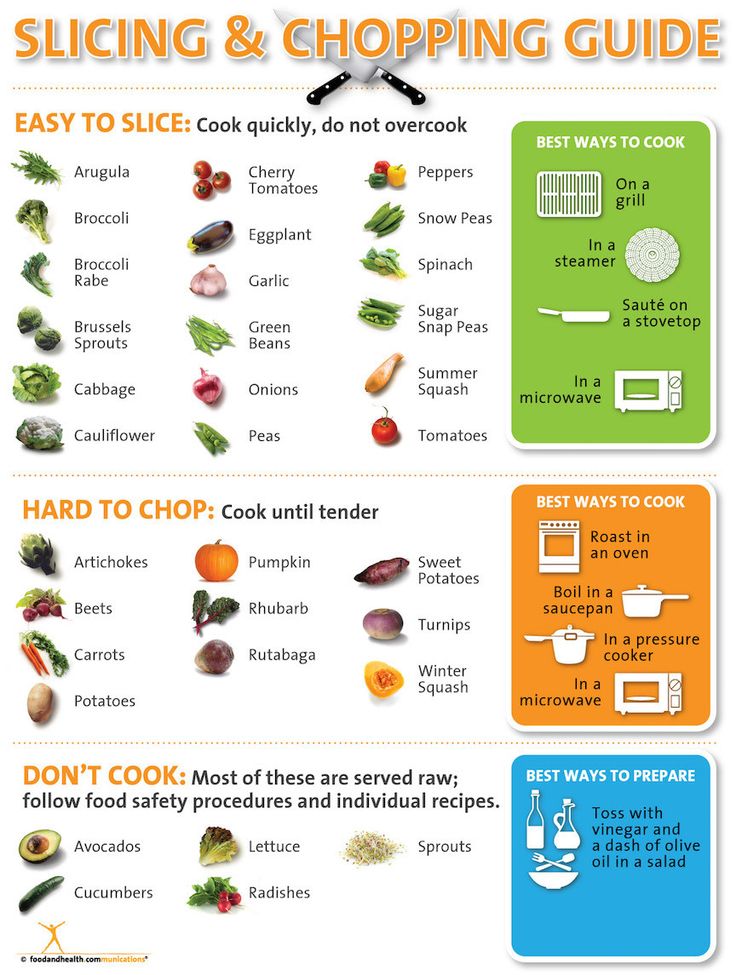
- Do not feed your baby pumpkin meals more than 7 times a month. An excess of pumpkin in the diet can cause "carotene jaundice".
Pumpkin puree with apple
Pumpkin can be mixed with many vegetables and fruits. The perfect combination with apples. Prepare baby pumpkin and apple puree for your baby, and you will see with what pleasure your child will eat it. In addition, mashed potatoes are very healthy and easy to prepare.
Ingredients:
- Pumpkin 200 gr;
- Apple 200 gr;
- Bottled water;
- Honey to taste.
How to prepare
- Peel and cut the pumpkin into small pieces. Free the apple from the peel. Remove the core and cut into pieces the same size as pumpkin. Put a small enamel pot of water on the stove, bring the water to a boil. Reduce heat to minimum. Dip the pieces of pumpkin into boiling water, after 10-12 minutes add pieces of apple there.
